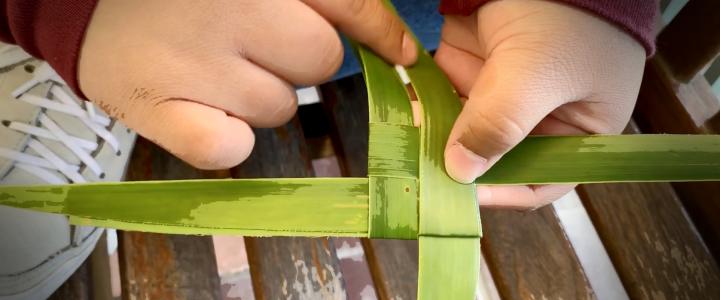
Anyone who walks through a museum or has a simple talk with an elder (saina) or local historian about the ancient CHamoru society and their traditions is bound to walk away amazed by the enduring spirit of the island’s ancestors. From using towering latte stone structures to uphold their buildings, to carving canoes from breadfruit trees, and crafting furniture from the mighty ifit trees, CHamorus have a long-standing history of creativity and innovation. Among their many notable practices is weaving, which has been a source of both artistic expression and utility.
In ancient CHamoru society, women were often tasked with weaving everyday items such as lidded bags (balakbagk) for carrying tools, small, rectangular baskets (kottot) used for gifting rice, and fans and hats that guarded against the noon heat. Many of the items crafted also served multiple purposes. For instance, the same pattern used to weave a mat (guafak) could be used as a blanket, a funeral shroud, or a platter for holding food. Other creations were especially useful for carrying out everyday necessities such as fishing or hunting. Ancient CHamorus would weave slings and nets (talaya) to catch their next prey. Decorative pieces like flowers, headbands, fish (guihan), or stars were also popular.

Åkgak, a type of pandanus plant, is preferred for weaving as it is durable and more accessible than coconut leaves, which can be tedious to grab from high hanging branches. The leaves of the åkgak are usually cut by a triangular metal tool called a si’i. Can’t find an åkgak or a short coconut tree (trongkon niyok) to pull your materials from? No worries! Weavers don’t have to limit themselves. Palm leaves or any leaves long enough to carry out your creations are still great substitutes.

Unfortunately, during World War II, colonizers had discouraged weaving and the practice slowly started to dwindle from there. In addition, the rise of plastic and other household goods has inevitably taken over consumer markets and rendered the need for weaved products useless. However, despite these obstacles, weaving still remains a staple of the island’s culture, which only highlights the enduring spirit of the CHamoru people. It remains a practice that is handed down from our island’s elders onto younger generations who are becoming more and more interested in learning a culture and history that had once tried to be erased. The artistry and utility of this simple past time renders it a timeless staple of the CHamoru people.
For a sample weaving video, please see https://youtu.be/1Y2T7uAxb5A













